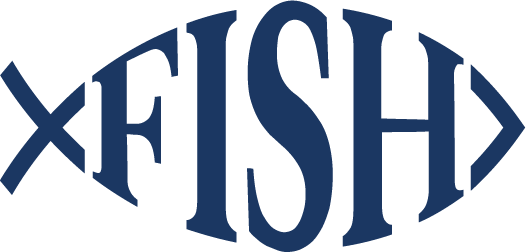The Fish Food Bank helps people by giving them food when needed. It operates with the help of donations and volunteers to combat hunger.
The Fish Food Bank helps lots of people who can’t always get healthy food. This group collects food from donations. It is careful buying to make sure people who don’t have much money always have food to eat.
The food bank helps now and plans for the future by working with others and telling people about hunger. The food bank depends a lot on volunteers who give their time to sort, pack, and give out food. With community support, Fish Food Bank keeps fighting hunger.
History
Let’s dive into the history of Fish Food Banks. These vital institutions have humble beginnings. They have grown to become lifelines for communities. Their story is a mix of human compassion and evolution.
Origins Of Fish Food Banks
The concept of Fish Food Banks started many years ago. Kind individuals wanted to help hungry neighbors. They gave away fish, bread, and other essentials. This act of giving led to the first food banks. These banks collected, stored, and shared food. The name ‘Fish’ symbolizes feeding the needy. It comes from the ancient tradition of sharing fish as a community meal. Small efforts sparked a movement. It led to the formal creation of Fish Food Banks.
- 1950s: Small local food closets emerged.
- 1960s: Churches began to organize food sharing.
- 1970s: The term ‘food bank’ became official.
Evolution Of Fish Food Banks
Fish Food Banks did not stop growing. They adapted to serve more people. These banks changed with new ideas and technology. They now have websites and online donation systems.
| Decade | Innovation |
| 1980s | National networks formed |
| 1990s | Computer systems for inventory |
| 2000s | Online giving options |
| 2010s | Mobile food banks |
As people learned about hunger, many wanted to help. Fish Food Banks partnered with grocery stores and farms. They reduced waste by saving surplus food. They ensured the food reached those in need. Volunteers are the heart of these food banks. Their time and energy keep the mission strong.
Today, Fish Food Banks are more than places to get food. They are hubs of hope, powered by community spirit.

Credit: business.kittitascountychamber.com
Importance
Fish Food Banks play a crucial role in aquatic health. Understanding their importance is vital for maintaining vibrant fish populations and ecosystems. Proper nutrition is essential for fish to thrive. As humans need a balanced diet, so too do our underwater friends.
Ensuring Fish Population Health
Fish require a plethora of nutrients to survive. A Fish Food Bank ensures they receive:
- Vitamins for immunity
- Minerals for bone strength
- Proteins for growth
Feeding programs from these banks also help control fish growth rates and populations.
Supporting Aquatic Ecosystems
Aquatic ecosystems rely on balance. Fish Food Banks provide specific foods that:
| Benefit | Food Type |
| Maintain algae levels | Algae-based foods |
| Control parasite spread | Medicated foods |
| Enhance water quality. | Clean ingredient diets |
Feeding in specific areas stops too many fish and keeps water clean for all water animals.
Operation
The Fish Food Bank’s work is the main support for water communities. With a mission to create a splash in fighting hunger under the sea, this operation is essential. It ensures no fish swims on an empty stomach.
Collection Of Donations
The Fish Food Bank starts with a wave of generosity. Local sea creatures and marine supporters bring their donations. These include algae, plankton, and other vital nutrients.
- Local Drop-offs ensure an easy way for donors.
- Sea Scouts collect from coral neighborhoods.
- Annual Drives gather bulk donations during migration season.
Distribution To Fish In Need
The heart of the operation pumps life through the sea. Nutrients reach fish everywhere.
| Fish Type | Food Provided |
| Carnivores | Small crustaceans and mollusks |
| Herbivores | Seaweed and algae |
| Omnivores | Varied diet based on availability |
Trained marine delivery teams ensure safe and timely distribution. They choose routes that work well for efficiency.
Challenges
Running a Fish Food Bank involves several complex challenges. Good planning and doing things are important to managing resources and feeding fish well. Let’s explore the main issues faced in this endeavor.
Sustainability
Fish Food Banks strive to operate, but it’s not easy. Sustainable practices are crucial to protect aquatic ecosystems.
- Resource Management: Ensuring a steady supply of environmentally friendly food sources.
- Environmental Impact: Minimizing waste and carbon footprint associated with food production.
- Cost-Effectiveness: Balancing sustainability with cost to remain operational.
Nutritional Requirements Of Fish
Meeting the nutritional needs of diverse fish species is vital for their well-being.
| Fish Type | Required Nutrients | Common Foods |
| Omnivores | Proteins, Carbs, Fats | Algae, Insects, Pellets |
| Herbivores | Plant-based Nutrients | Algae, Vegetables |
| Carnivores | High-Protein Foods | Fish, Worms |
Each category of fish requires a specific diet to ensure their health and growth.
Success Stories
The Fish Food Bank has been a beacon of hope in the community. It transforms lives every day. Hear the stories of people who went from needing help to giving it. With each tale, hearts get fuller and the community grows stronger.
Impact Of Fish Food Banks
Here we celebrate the victories of those who found support. See the difference Fish Food Bank makes:
- Samantha’s Journey: A single mother, struggling to feed her kids. The Fish Food Bank helped her. She’s now a volunteer, helping others.
- Max’s Turnaround: Lost his job. He has faced tough times. The Fish Food Bank was there. He’s back on his feet and giving back, one meal at a time.
Numbers say a lot:
| Year | Meals Provided | Volunteer Hours |
| 2022 | 300,000+ | 20,000+ |
| 2023 | 350,000+ | 25,000+ |
Community Involvement
The heart of the Food Bank is the community. It’s made up of people who care. See how they pitch in:
- Local Schools: Organize food drives. Teach kids to help others.
- Businesses: Donate food, money, and time. Make a big impact.
Sourcing Fish Food
When feeding your underwater friends, choosing the right food is crucial. It’s not only about keeping them full; it’s about providing the necessary nutrients. Let’s dive into the world of fish food and explore the options available for a healthy aquatic diet.
Types Of Suitable Fish Food
Fishes thrive on a diet that mirrors their natural food sources. Here’s a look at the top choices for fish nutrition:
- Flakes: Ideal for small fish. They float at the top and are easy to consume.
- Pellets: These sink slowly, allowing fish at all levels to feed.
- Frozen foods: Offer pure nutrition, similar to their natural diet.
- Live foods: Brine shrimp or worms provide a lively meal.
- Vegetables: For herbivores, boiled veggies like peas or lettuce are great.
- Algae wafers: Perfect for bottom feeders like Plecos and other algae eaters.
Remember, variety is key for a balanced diet.
Exploring Alternative Food Sources
Looking beyond store-bought food can be an adventure. It can also lead to more natural dietary options:
| Food Source | Benefits |
| Home-grown algae | Natural and cost-effective |
| Cultured live food | Encourages hunting behavior |
| DIY fish food recipes | Customized to specific dietary needs |
Kitchen scraps like zucchini, spinach, or peas can also supplement their diet. Ensure that all foods are safe and appropriate for your fish community.
Future Outlook
The vision for fish food banks shines bright into the future. Anticipation for growth and innovation sparks excitement. Consider these visionary steps:
Expansion Of Fish Food Banks
Growing demands required more fish food banks. Plans involve:
- New locations to serve wider communities.
- Increased support from donors and volunteers.
- Partnerships with other charities to maximize impact.
Innovation In Fish Nutrition
Healthy diets for fish are critical. The focus includes:
- Research for better formulas.
- Environmental sustainable practices.
- Education programs on nutrition awareness.
| Area | Goals |
| Research & Development | Creating nutrient-rich fish feeds. |
| Technology Integration | Using data analytics to advance care. |

Credit: www.fish-food-pantry.org

Credit: www.gig
Frequently Asked Questions
What Does Fish Pantry Stand For?
A fish pantry is a collection of canned fish or seafood for easy cooking.
How Do I Access A Food Bank Near Me?
To find a local food bank, search online using food bank directories like Feeding America or call 211. Check community centers, religious organizations, or local government resources as well.
How To Apply For A Free Food Parcel From The Government In The Uk?
To apply for a free food parcel, visit your local council’s website or contact their office. Verify eligibility requirements and submit the necessary application form.
How Do I Qualify For A Food Bank In The Uk?
To get food from a UK food bank, you usually need a note. You must go to a doctor, social worker, or teacher, and show that you don’t have enough money for food. Contact local food banks directly for specific eligibility criteria.
What Is A Fish Food Bank?
A Fish Food Bank stores and gives food made only for fish diets.
How Does A Fish Food Bank Work?
Fish Food Banks collect, store, and distribute high-quality food. It is suitable for various fish species to aquariums and hobbyists.
Who Benefits From Fish Food Banks?
Fish Food Banks help both home aquarium owners and public facilities. They provide vital support for maintaining fish well-being.. They provide essential nutrition tailored to the dietary needs of various fish species.
Conclusion
Nourishing aquatic lives sustains ecosystems and our own food security. With options like the Fish Food Bank, we help balance marine health and human needs. Let’s cast a wider net of support, ensuring these initiatives thrive. Dive into responsible feeding; together, we keep our waters teeming with life.









Leave a Reply